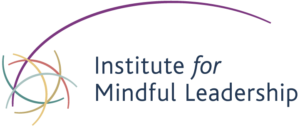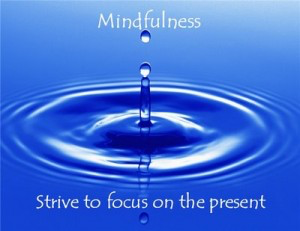28 Feb Mindful leadership
The November 2015 Mindfulness Leadership Summit explained mindful leadership as “an alternative to just leading from the top down, mindful leadership is leading from the inside out”.
To understand how becoming a mindful leader will benefit you, those who follow you, and your organisation, let’s start with a recap of what it means to be mindful. With its origins in Theravada Buddhism, mindfulness is the ability to be aware of the moment. You are totally present in the now, not the past, or the future. Now, the present.
 Janice Marturano, founder of the Institute for Mindful Leadership, describes mindfulness thus: “…not as you hoped it would be, not as you expected it to be, not seeing more or less than what is here, not with judgements that can lead to a conditioned reaction…but for exactly what is here, as it unfolds, meeting each moment with equanimity”.
Janice Marturano, founder of the Institute for Mindful Leadership, describes mindfulness thus: “…not as you hoped it would be, not as you expected it to be, not seeing more or less than what is here, not with judgements that can lead to a conditioned reaction…but for exactly what is here, as it unfolds, meeting each moment with equanimity”.
Mindfulness is being in the moment, totally present without judgement about what is ‘right’ or ‘wrong’. When you are mindful you accept what is and relinquish the need to control events or your reactions to them. Your state of awareness is heightened and you remain open to the situation at hand, the impact is has in you, and the possibilities.
Mindful leadership
An increasing number of main stream organisations are investing in mindful leadership because of the positives it brings – at minimal cost and with enduring benefits. Research, reported for example in Michael Carroll’s book The Mindful Leader, shows greater mindfulness makes more effective leaders.
The demonstrated benefits of mindfulness include increased focus, clarity of thought, creativity, empathy and courage – which explains why mindful leadership should be on your agenda too. These qualities give leaders resilience and the ability to cope with the challenges and demands of their organisational and personal lives.
Here’s why for my clients as an executive coach and for myself I find mindful leadership effective. In pressured situations where decisions and relationships are critical, mindfulness enables you to be calm, relaxed and alert while thinking through the context, facts, options and implications for yourself and stakeholders. You avoid knee-jerk reactions. And you don’t fall into the trap of over-relying on your prior experience or following conditioned patterns of thought and reactions.
Case study in becoming mindful
Jeff is a senior, ambitious leader of a large business unit. By most measures he is very successful, respected and regarded by the Board, his peers and staff as something of a star. When Jeff and I met he said he wanted ‘to get greater control of himself, to be more relaxed, and no less successful’. His job and his approach to work were taking a toll that he and his immediate family were beginning to think wasn’t worth it.
With Jeff, we identified his biggest challenge was dealing with his fixed expectations of how he, others and the organisation should respond. And then ruminating endlessly about those things he could not control. He felt exhausted and had to make extraordinary efforts to keep up his energy levels and maintain his pace and success. The toll, as it is with too many executives, was high.
Learning to become mindful put Jeff back in control of this thoughts, feelings and actions. He was able to exercise greater discretion in the moment. When he was confronted with a problem, instead of allowing himself to waste energy on what he could not influence, he remained dispassionate and relaxed. And by adopting the position of a ‘silent witness’ of himself and the situation he gained greater perspective.
Jeff now stops in the moment, he takes what Janice Marturano calls ‘purposeful pauses’. This space allows him to focus with acute clarity and synthesise all threads and competing interests. His relaxed demeanour conveys confidence. His inclusion of others empowers and builds trust. He feels – and is – a much more considered. Those around him sense this. The regard with which he is held has risen. Jeff is a happier person.
Misconceptions about mindfulness
Be assured mindfulness is not about being passive. Although it is a meditative process, it does not involve sitting on a cushion in the Lotus position and making your mind blank. These are ignorant stereotypes. Mindfulness can be practised anywhere and any time: in a tense meeting, in a negotiation with a customer, or having your morning cup of coffee.
It’s not just Apple executives (remember the strange eating and other habits of Steve Jobs?) who practise mindfulness, the hard-nosed investment bankers at Goldman Sachs and the creative executive talent of Medtronic do it too.
Benefits of practising mindfulness
 Studies at Berkeley show social, psychological and physical benefits of practising mindfulness. These include improved coping under pressure, focus and attention, energy, eelations with those around you, and health habits.
Studies at Berkeley show social, psychological and physical benefits of practising mindfulness. These include improved coping under pressure, focus and attention, energy, eelations with those around you, and health habits.
For these reasons alone, it’s worth learning to become a mindful leader.
Questions to ask your self to become more mindfulness
To be in the now, i.e. in the moment, ask yourself these questions:
1. What’s happening right now?
2. How do I feel about what’s happening right now?
3. What do I think about it?
4. How am I behaving, i.e. what do others around me see?
5. Am I getting the outcome I want?
6. If not, what do I need to do differently?
By repeatedly answering these questions for yourself, you will reach a new way of being, a mindful leader.
More on related topics
If you want to delve into other aspects of this topic I recommend:
+ Focus: The Hidden Driver of Excellence, Daniel Goleman’s latest book
+ It is possible to be happier, but not for the reasons you may think


